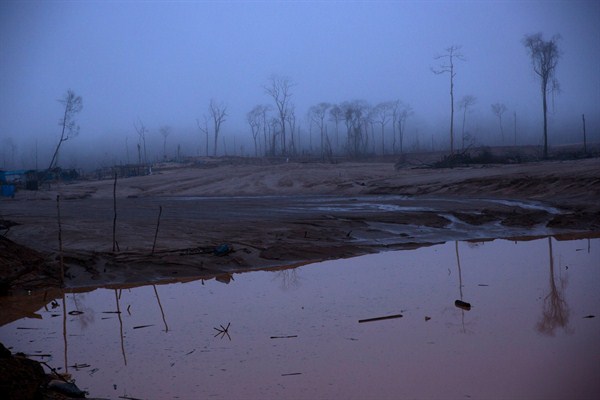LA PAZ, Bolivia—Gold mining has surged in Bolivia over the past 15 years, so much that gold is now the country’s third-largest export, trailing only zinc and natural gas. But as mining activities damage more of the environment, the Bolivian government’s ability to keep this boom in check is being tested.
The vast majority of the gold mining is small-scale and centered in northern Bolivia, in the Amazon, where the state’s presence thins out rapidly. New mining operations are mostly alluvial, with many involving large boats known as dragas that sit in a river, sucking up the silt beneath them and processing it for gold. Since they are mobile and require relatively little capital to get going in comparison to tunneling for gold, they are difficult to catch or stop.
Almost all of this mining is in the hands of politically powerful mining cooperatives. The word “cooperative” is something of a misnomer. These organizations are very often hierarchical, and the rights and rewards within them unequal. In some ways, cooperative miners resemble informal miners, but they have legal title to their piece of land. They generally practice a low-tech, high-manpower form of mining, with questionable environmental practices. But there is a huge range of cooperatives—some are small family operations, while others are big businesses in all but name. Among Bolivia’s gold miners, it’s common to have bosses who own concessions and contract laborers who receive none of the benefits or rights of being a cooperative member.

